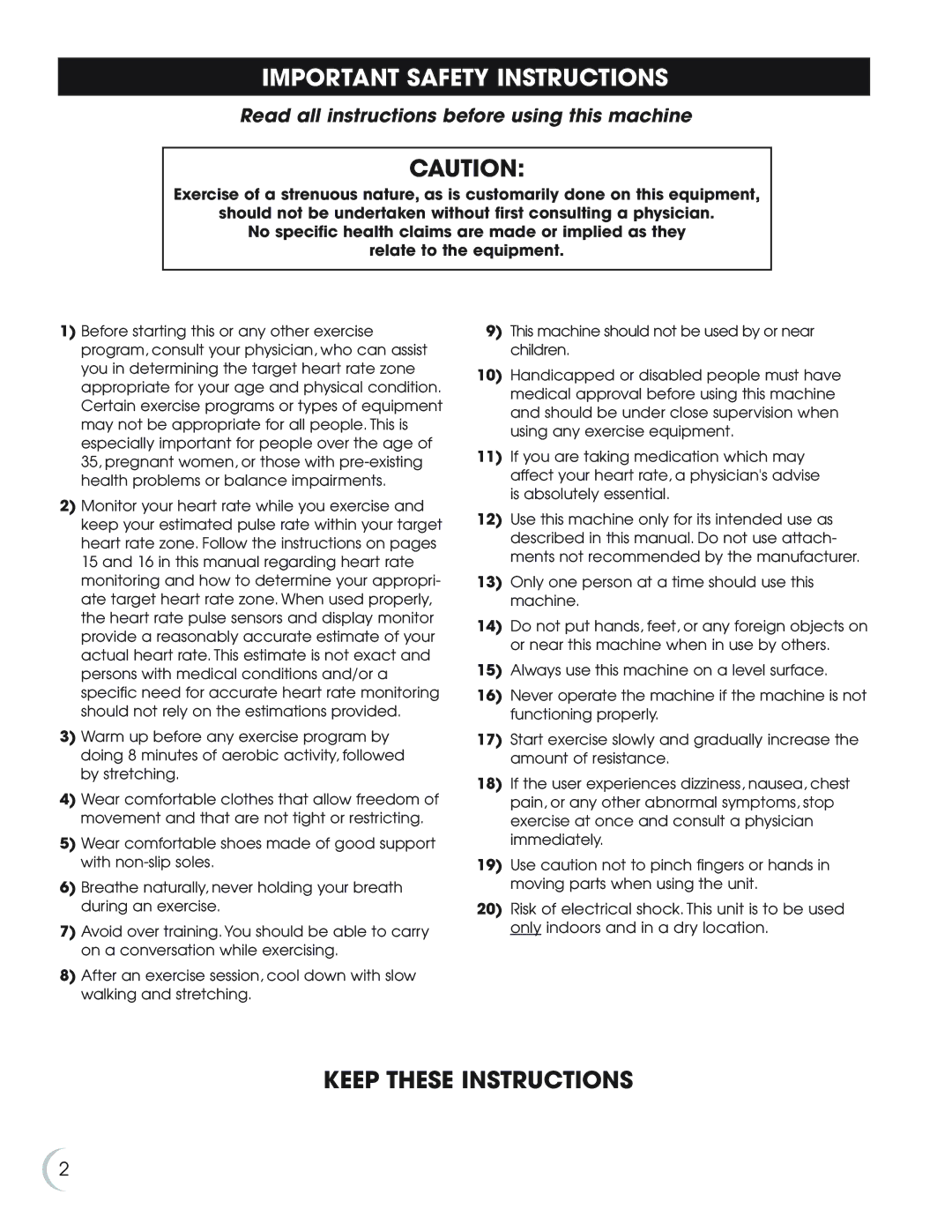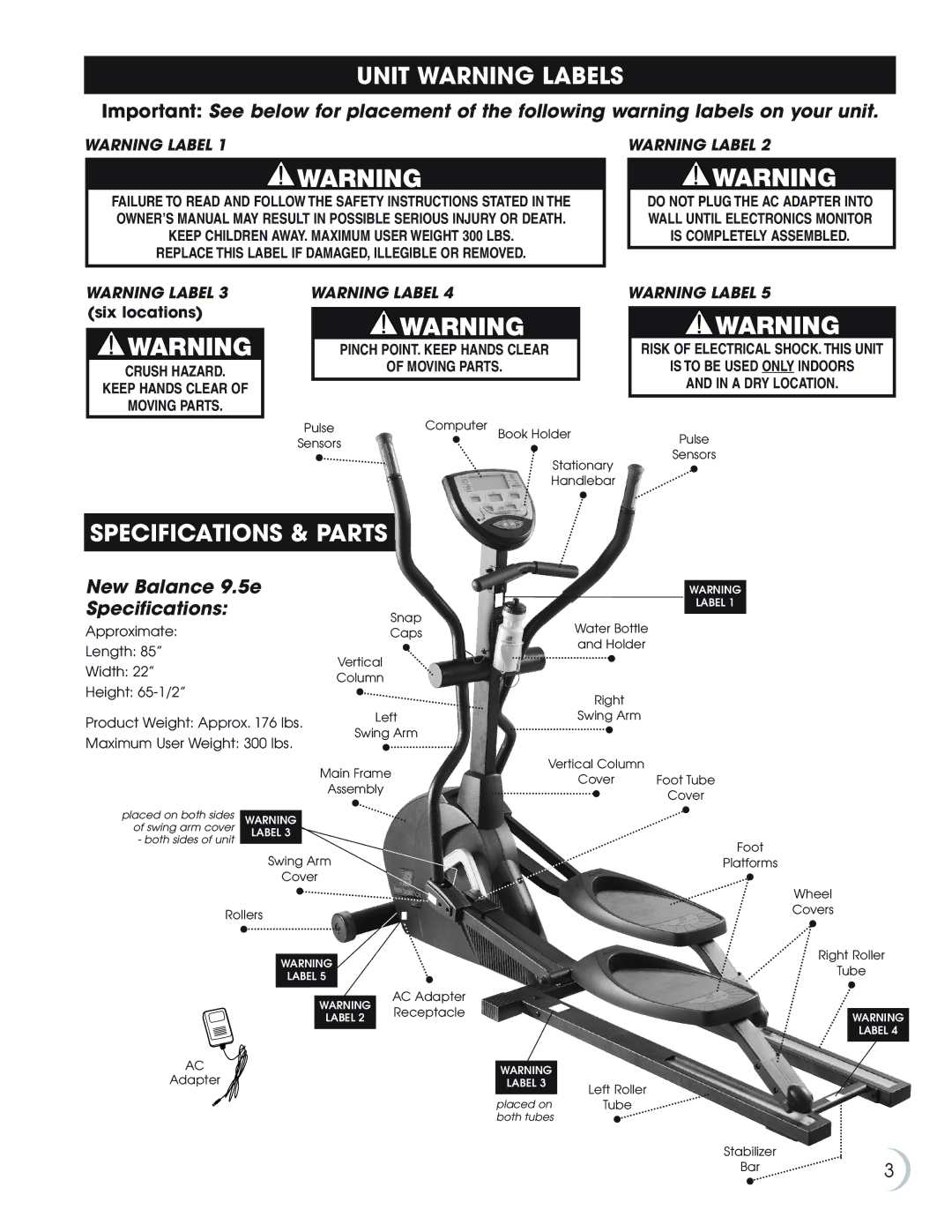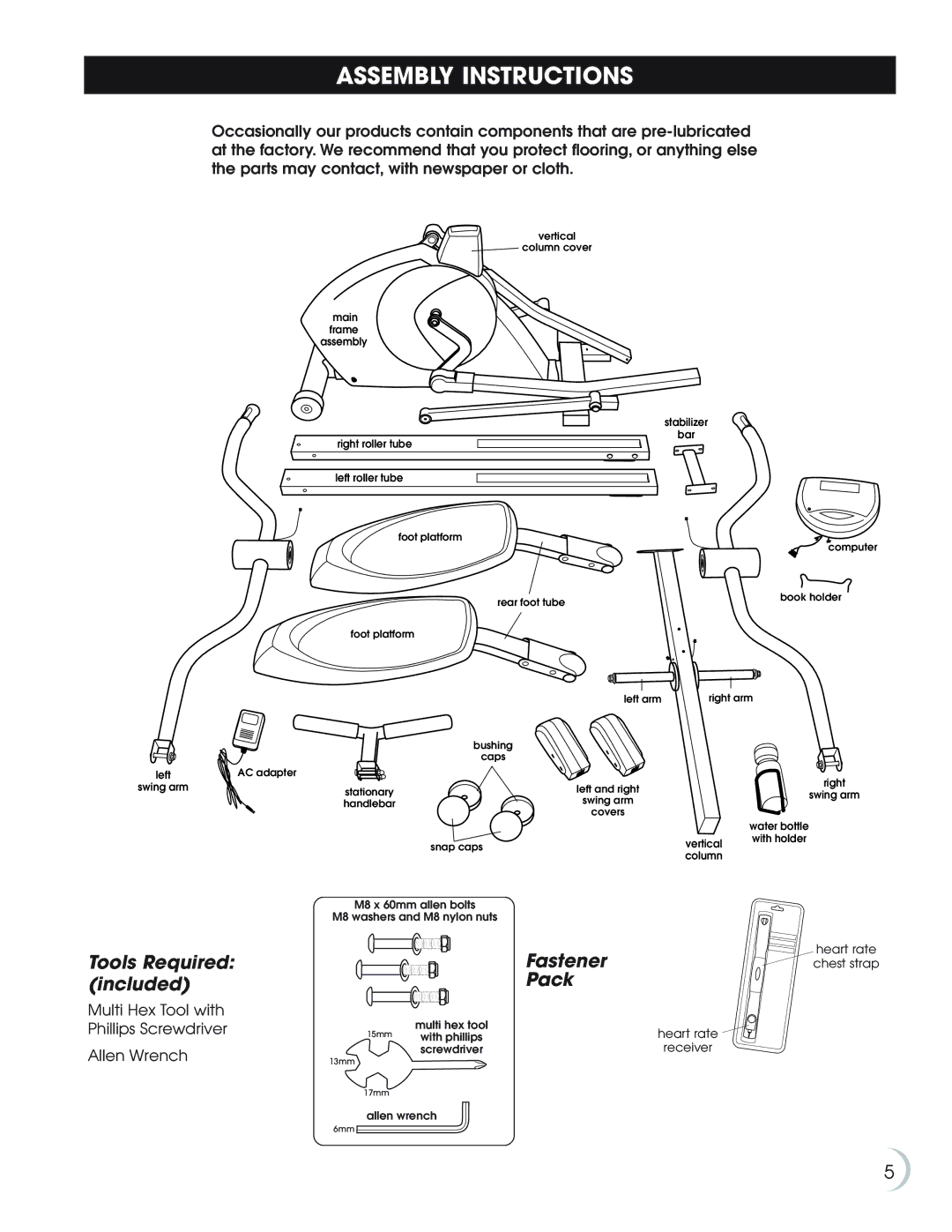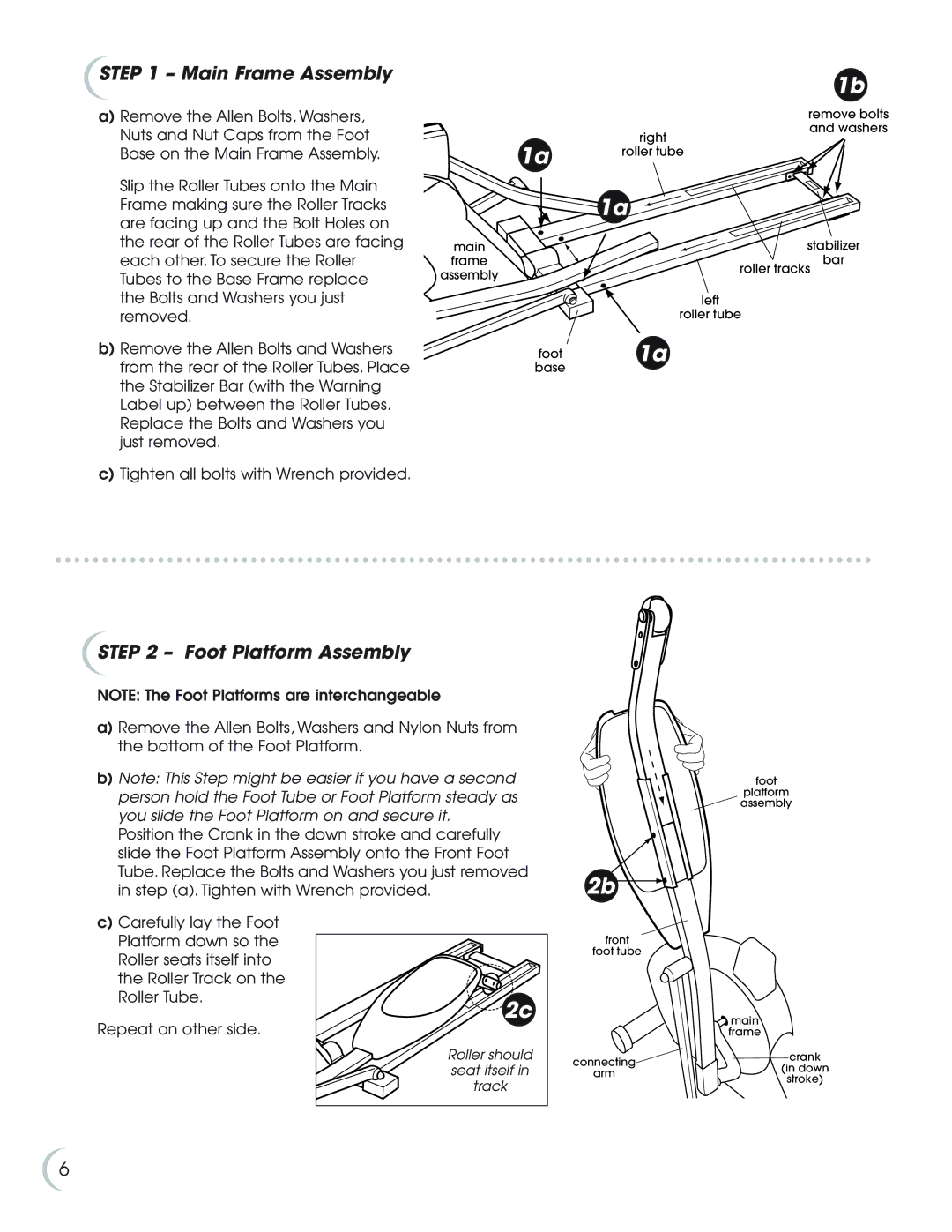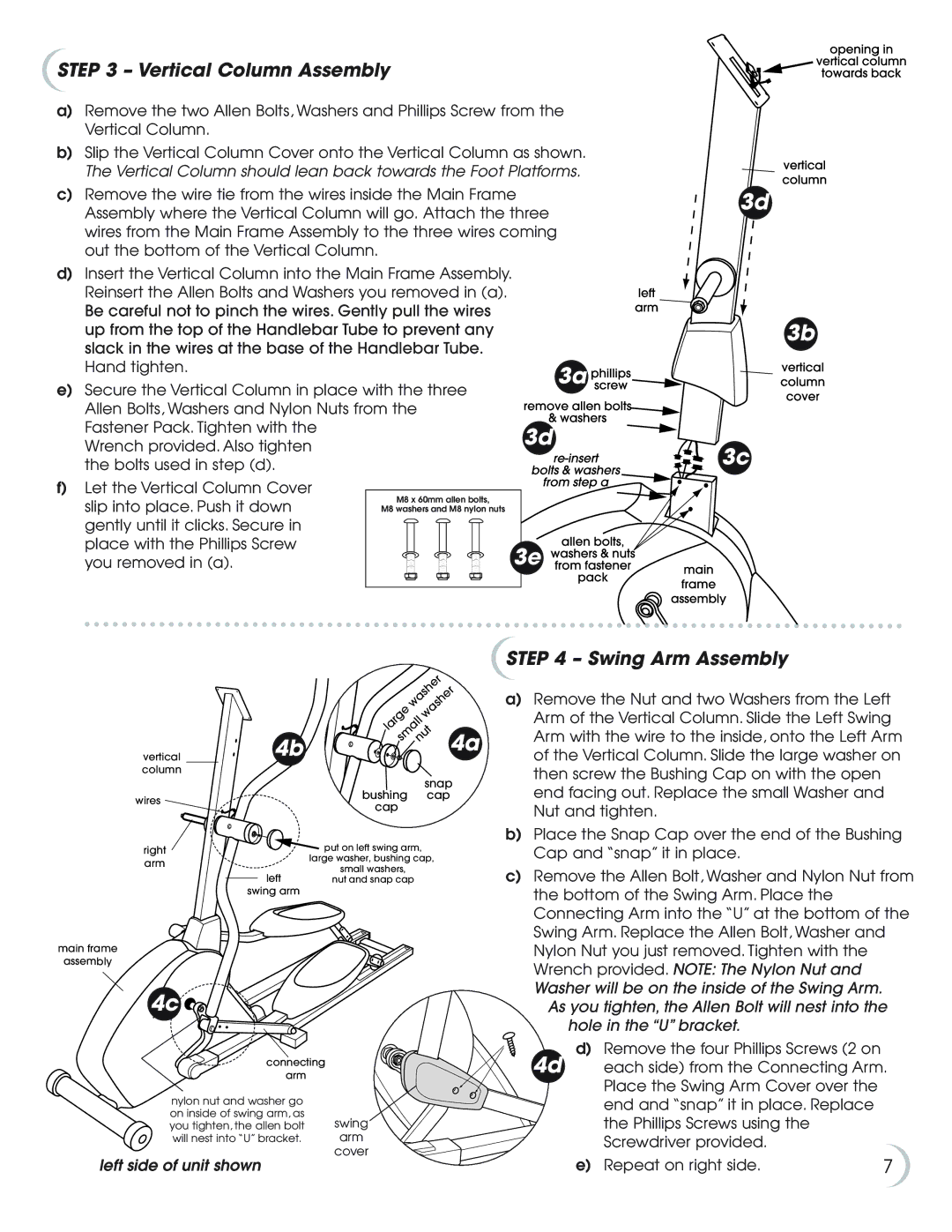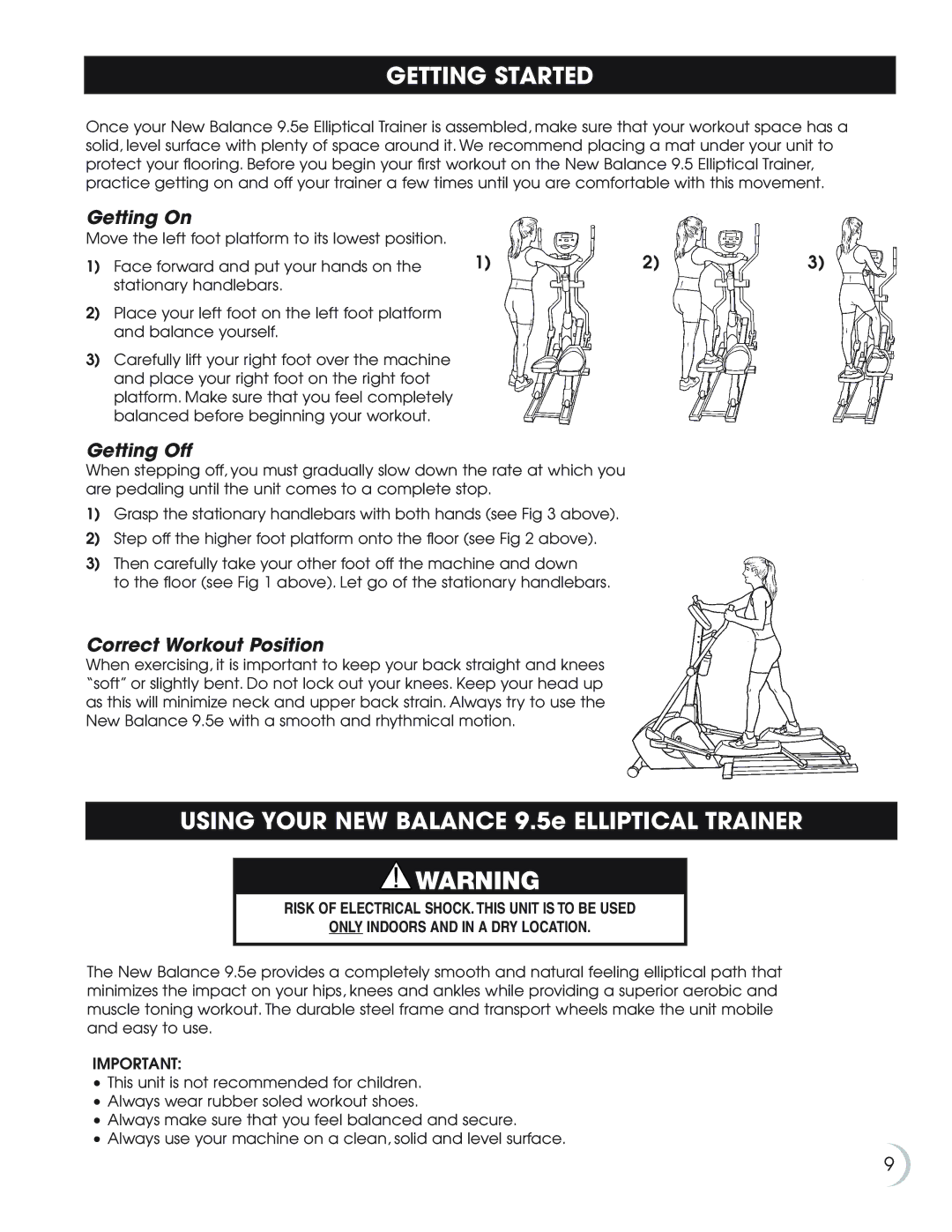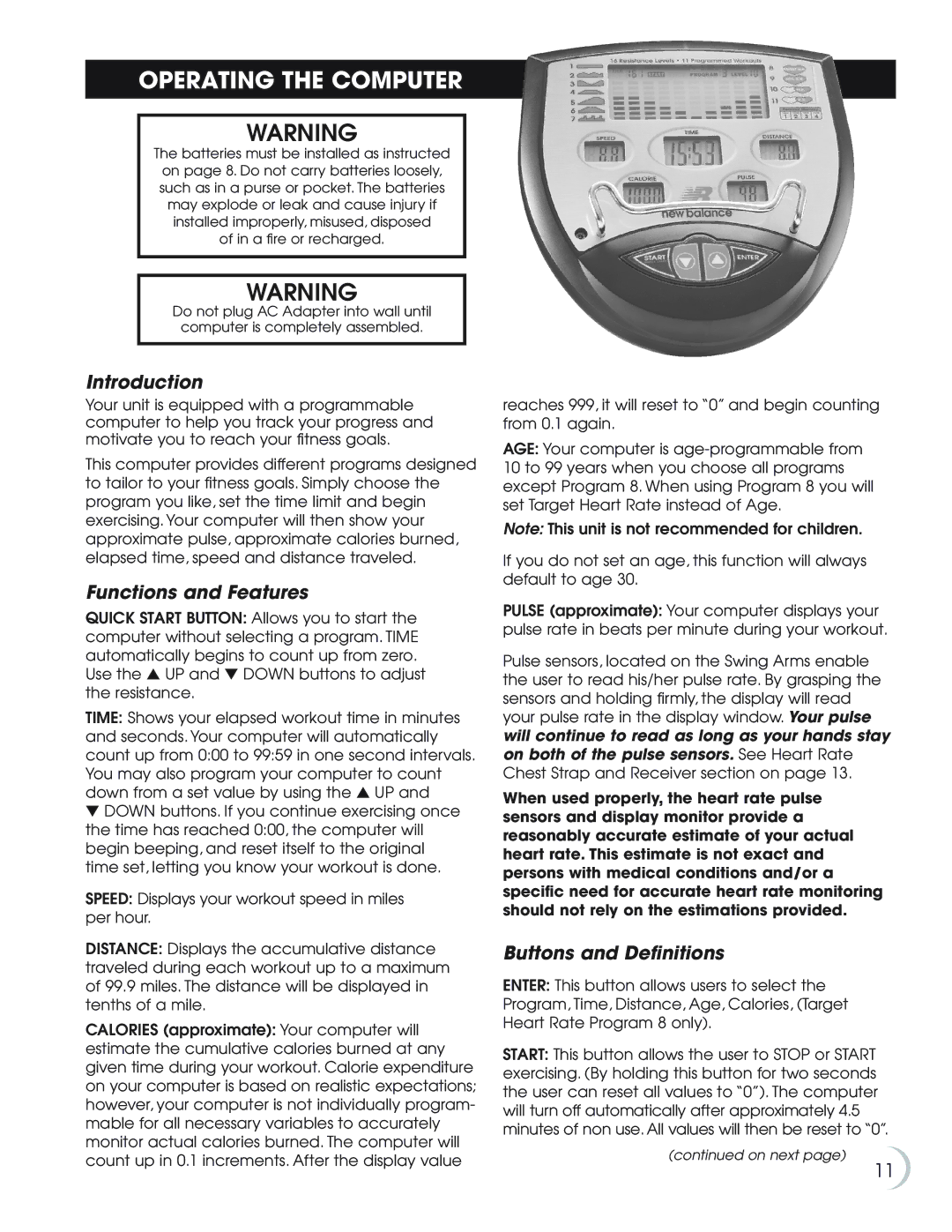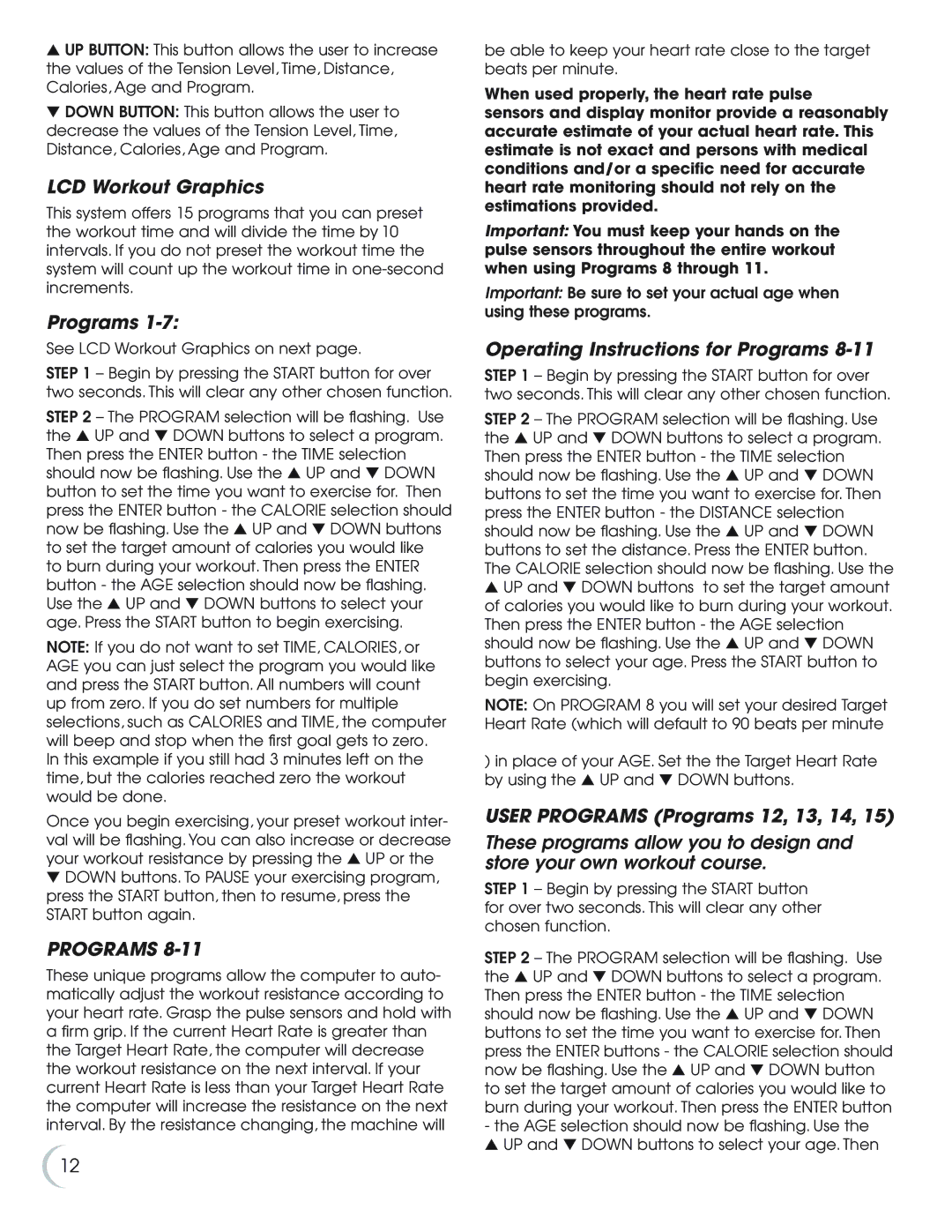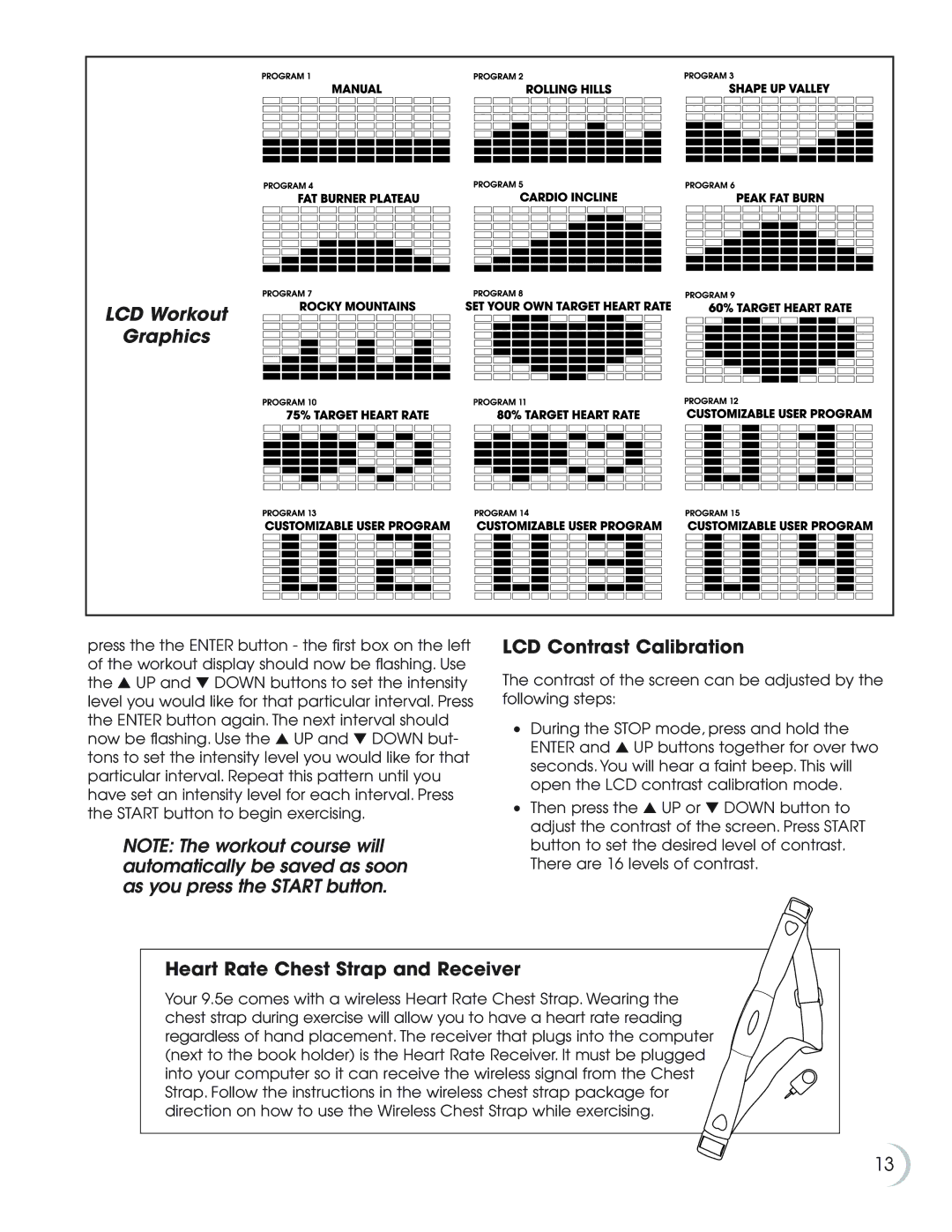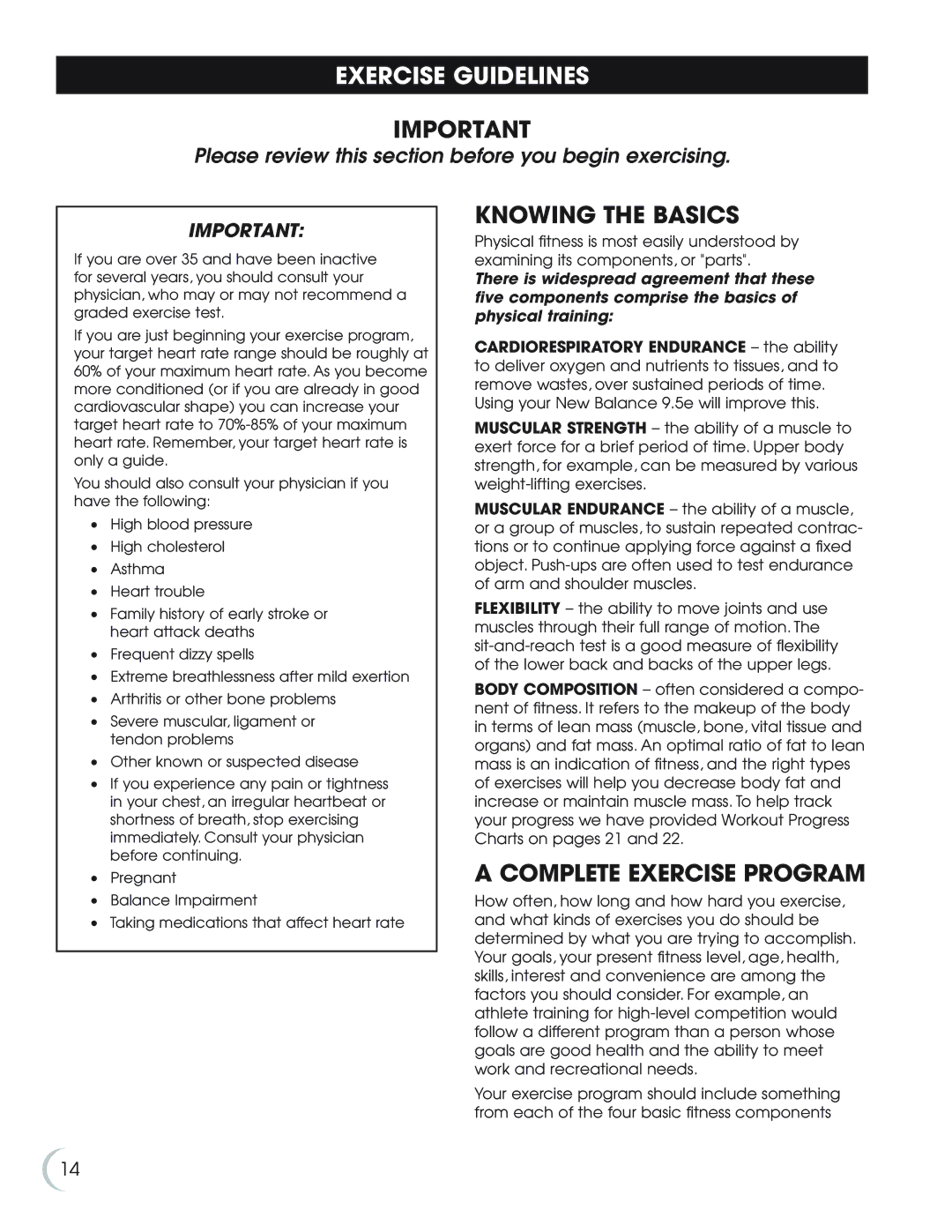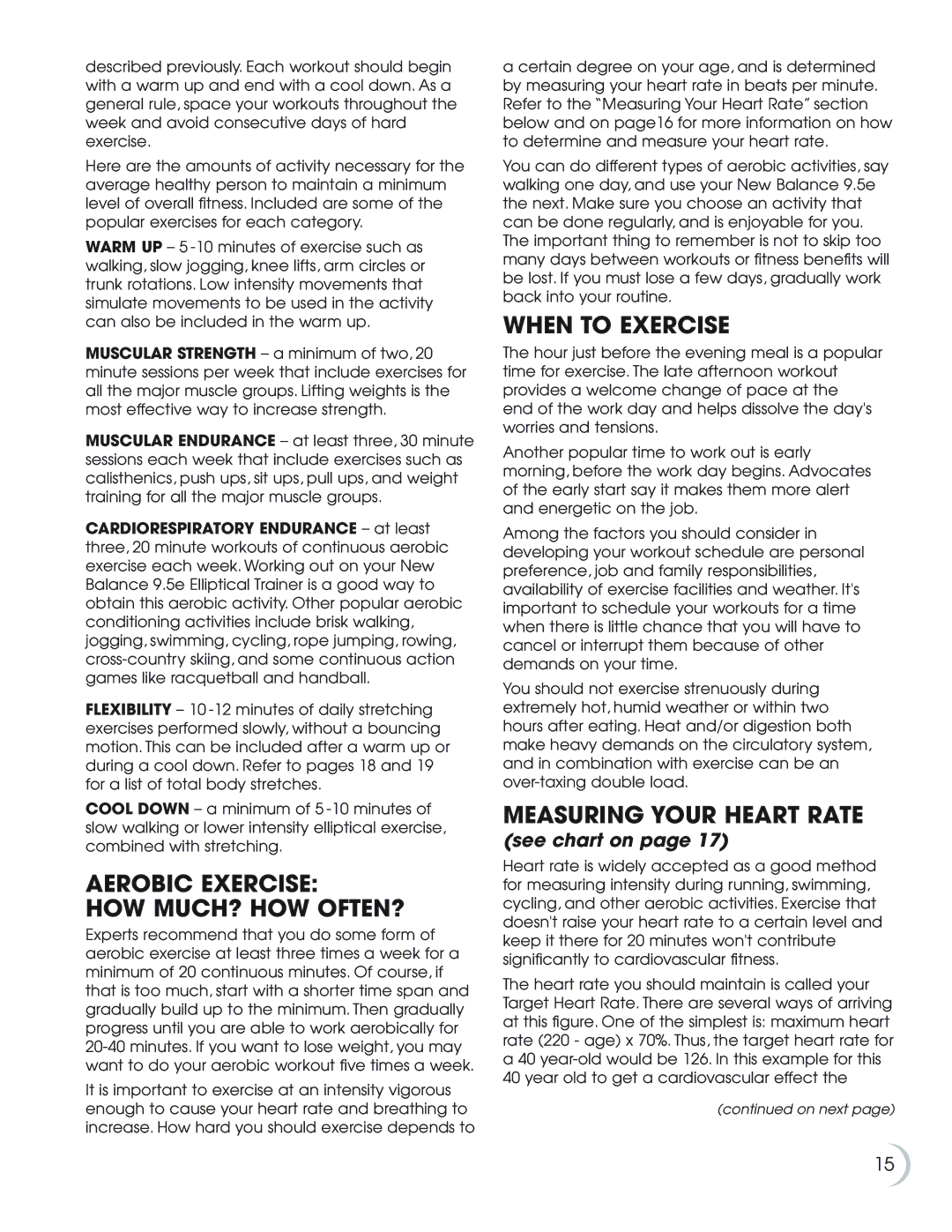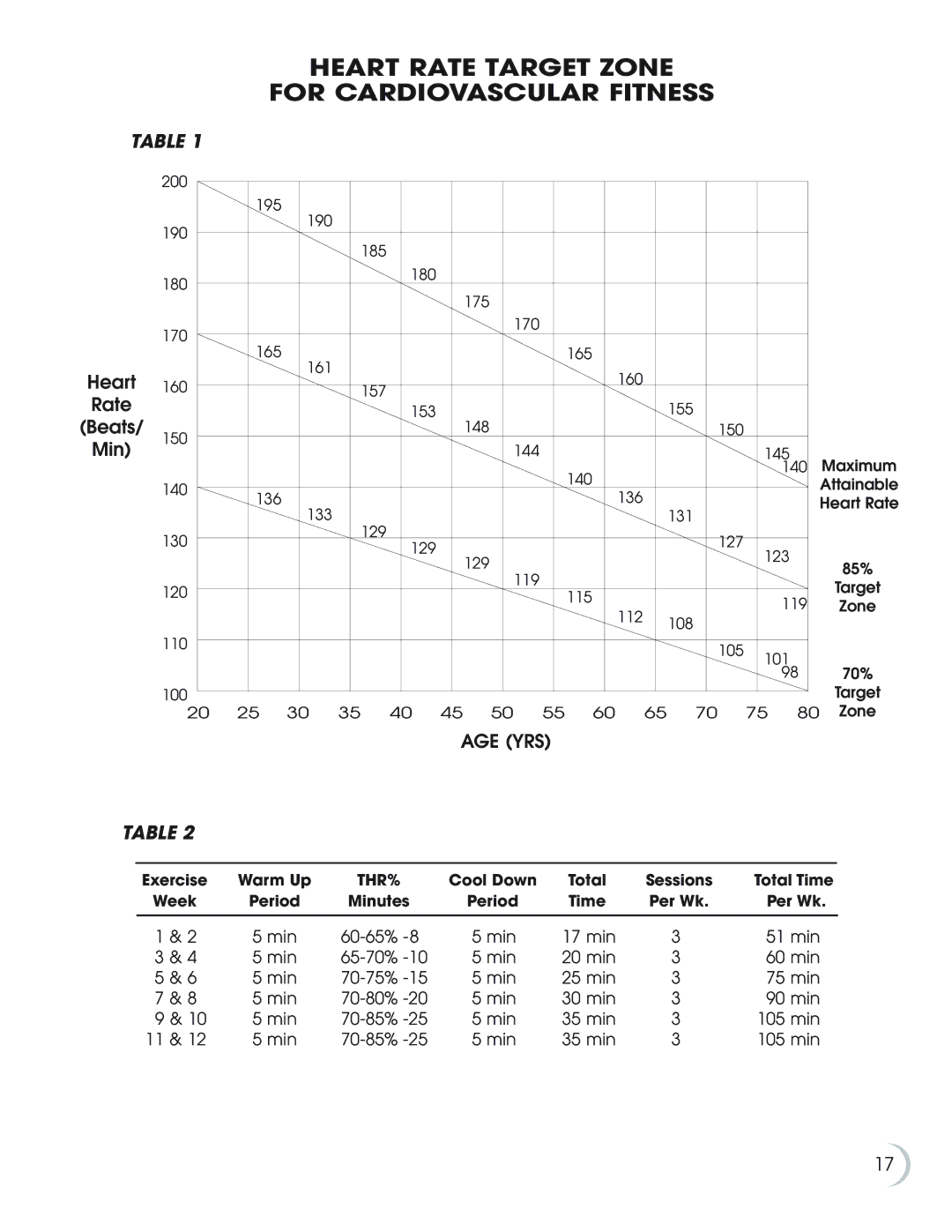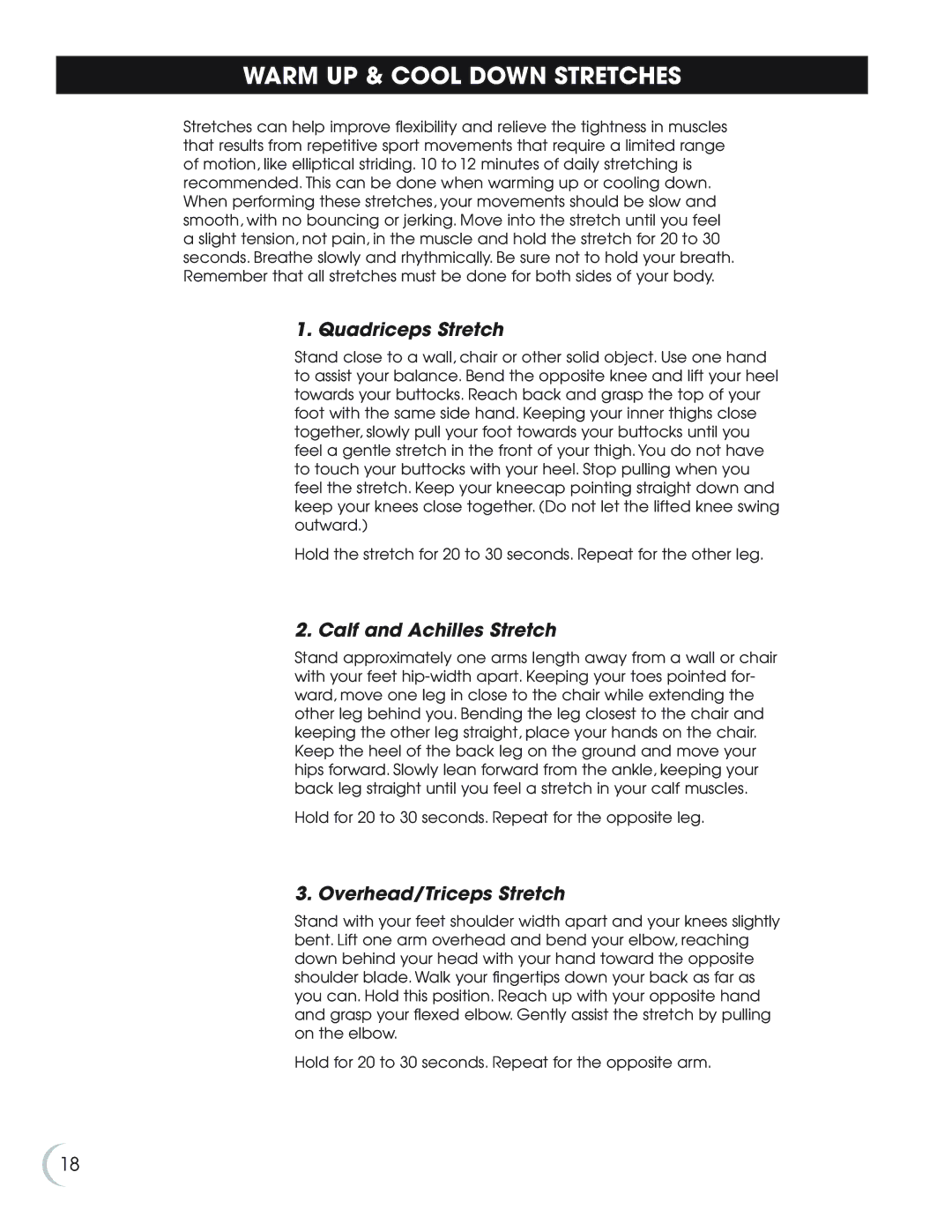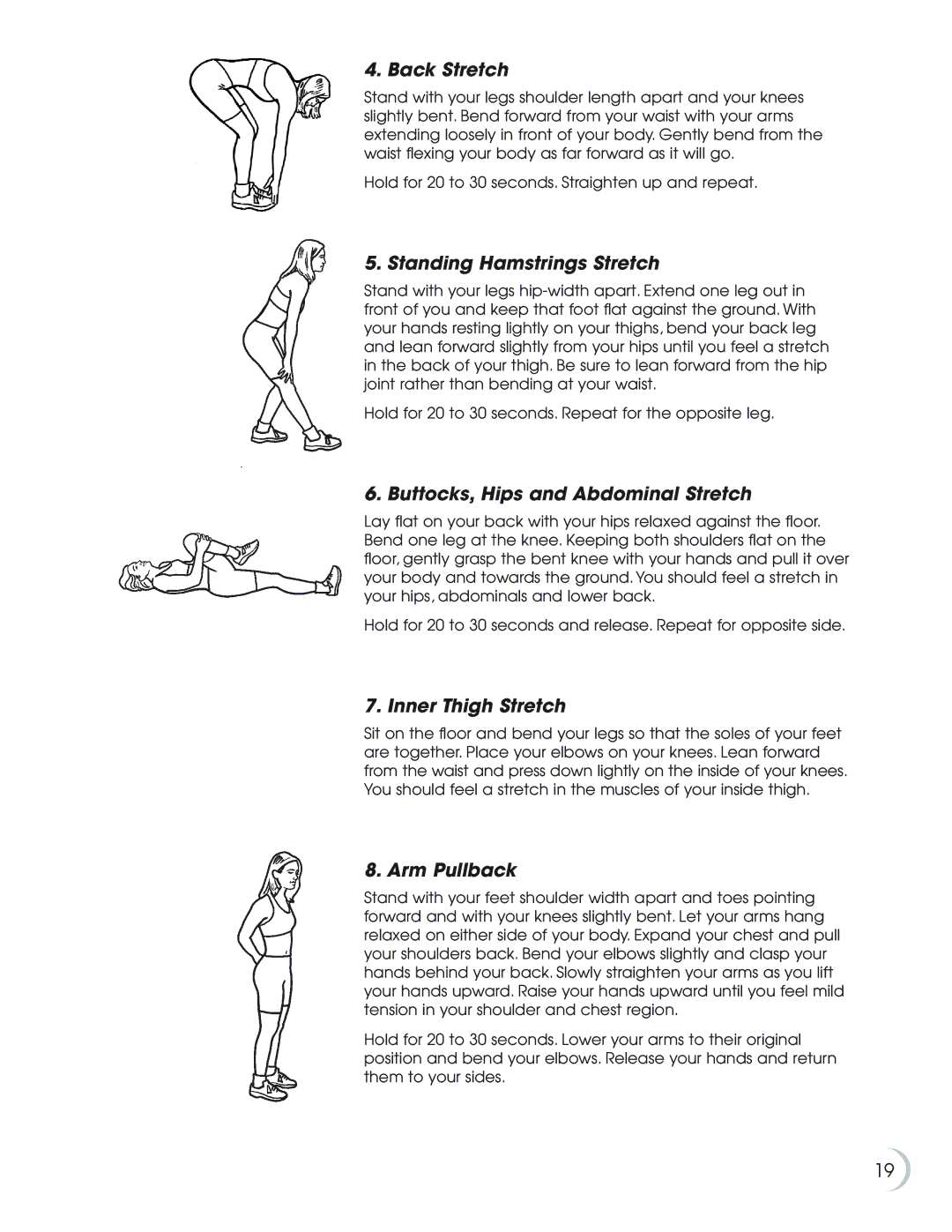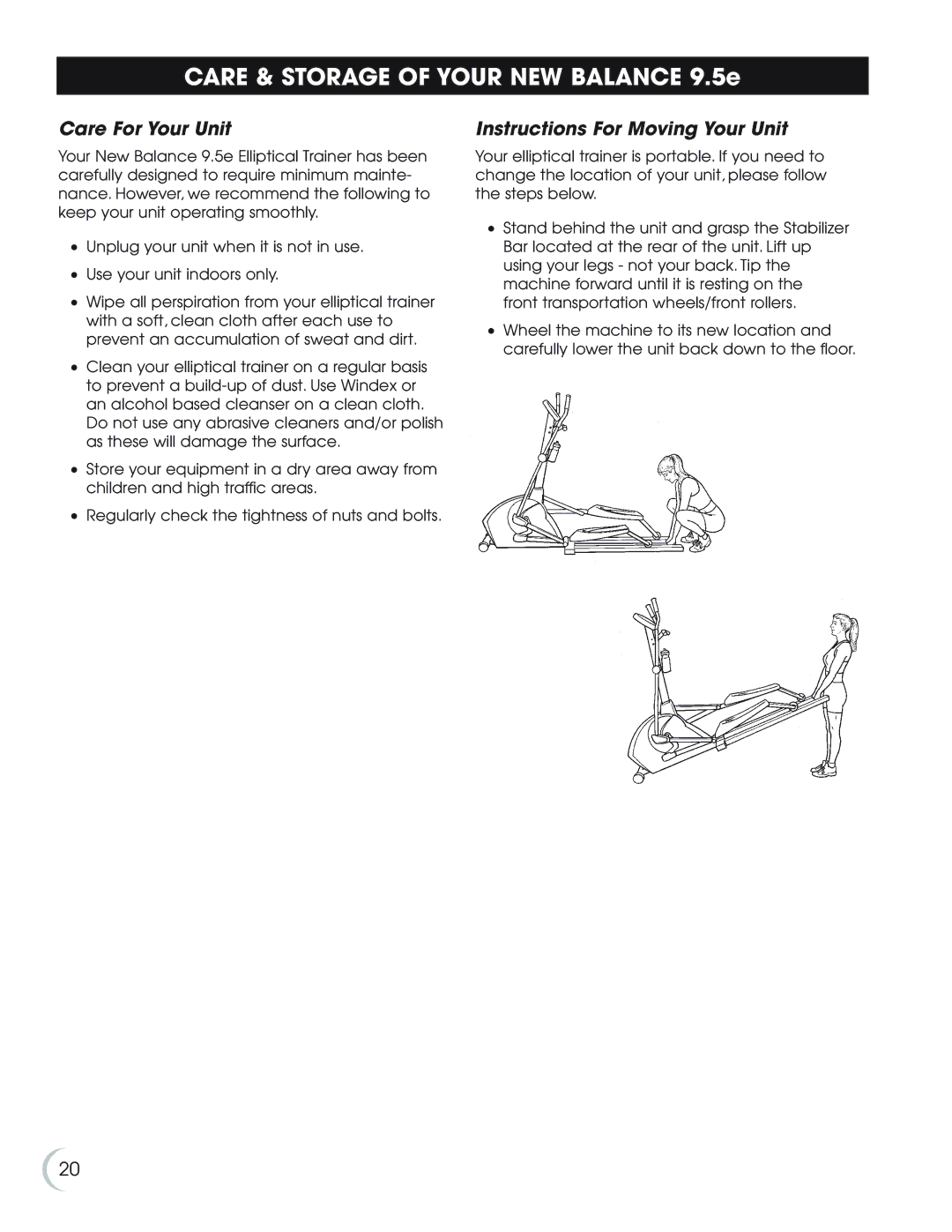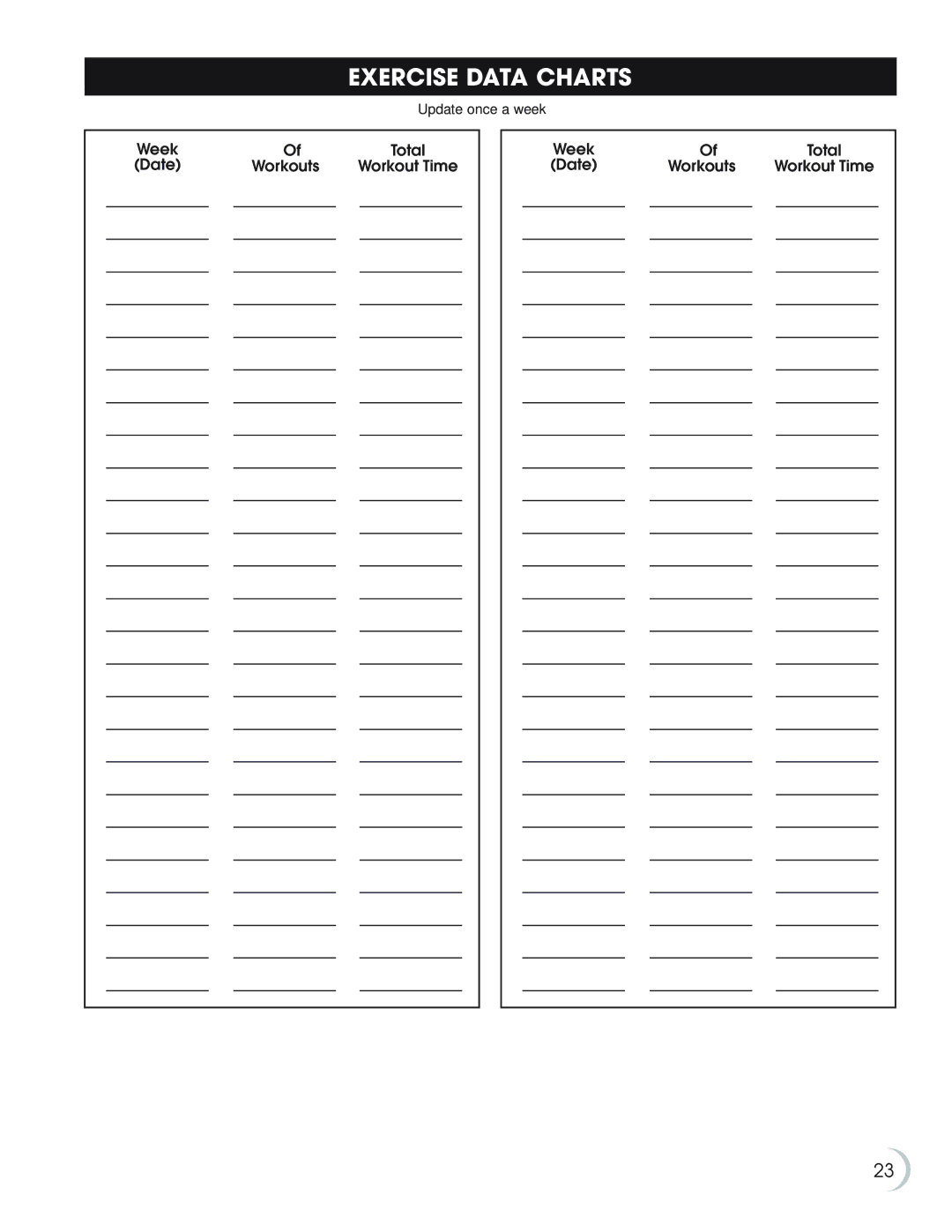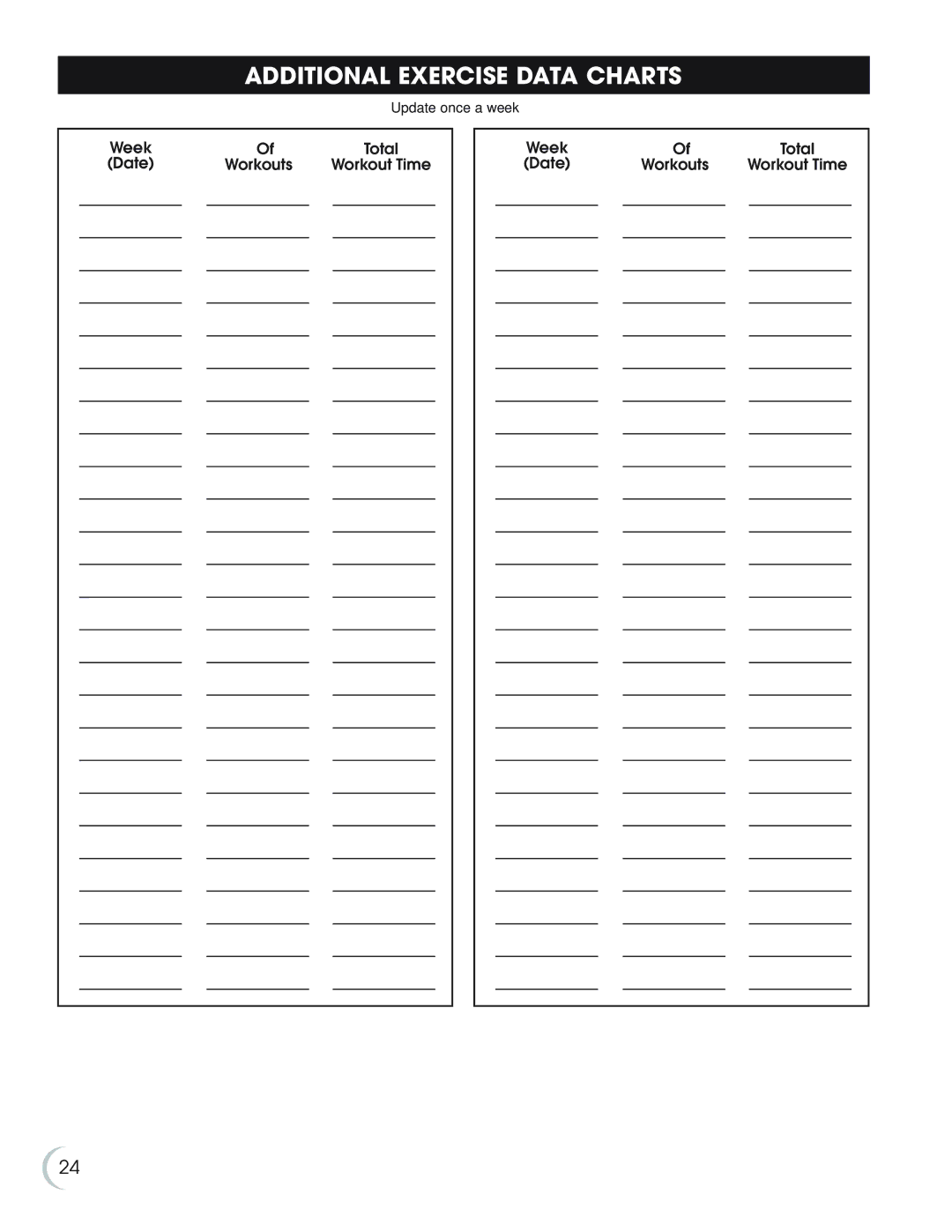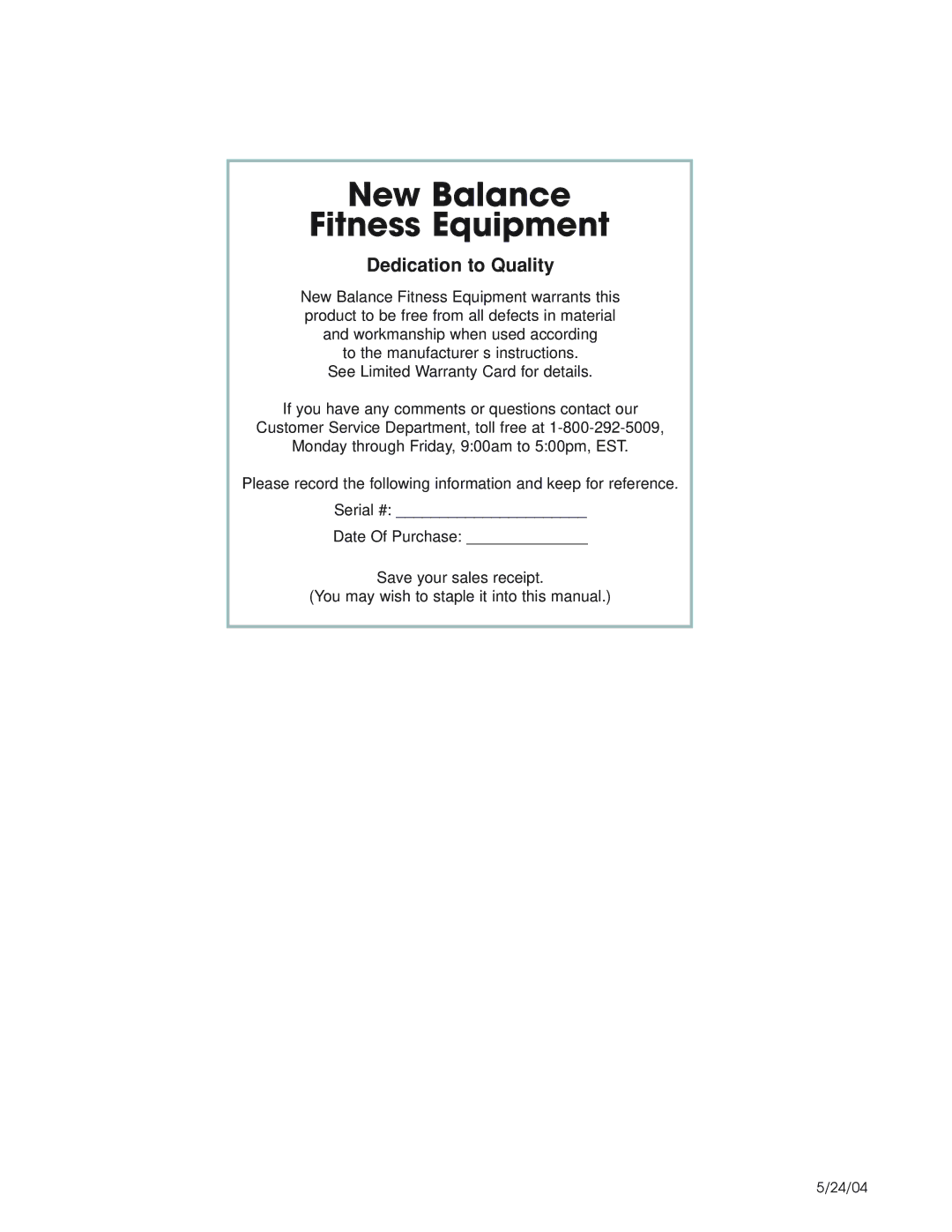described previously. Each workout should begin with a warm up and end with a cool down. As a general rule, space your workouts throughout the week and avoid consecutive days of hard exercise.
Here are the amounts of activity necessary for the average healthy person to maintain a minimum level of overall fitness. Included are some of the popular exercises for each category.
WARM UP – 5
MUSCULAR STRENGTH – a minimum of two, 20 minute sessions per week that include exercises for all the major muscle groups. Lifting weights is the most effective way to increase strength.
MUSCULAR ENDURANCE – at least three, 30 minute sessions each week that include exercises such as calisthenics, push ups, sit ups, pull ups, and weight training for all the major muscle groups.
CARDIORESPIRATORY ENDURANCE – at least three, 20 minute workouts of continuous aerobic exercise each week. Working out on your New Balance 9.5e Elliptical Trainer is a good way to obtain this aerobic activity. Other popular aerobic conditioning activities include brisk walking, jogging, swimming, cycling, rope jumping, rowing,
FLEXIBILITY – 10
COOL DOWN – a minimum of 5
AEROBIC EXERCISE:
HOW MUCH? HOW OFTEN?
Experts recommend that you do some form of aerobic exercise at least three times a week for a minimum of 20 continuous minutes. Of course, if that is too much, start with a shorter time span and gradually build up to the minimum. Then gradually progress until you are able to work aerobically for
It is important to exercise at an intensity vigorous enough to cause your heart rate and breathing to increase. How hard you should exercise depends to
a certain degree on your age, and is determined by measuring your heart rate in beats per minute. Refer to the “Measuring Your Heart Rate” section below and on page16 for more information on how to determine and measure your heart rate.
You can do different types of aerobic activities, say walking one day, and use your New Balance 9.5e the next. Make sure you choose an activity that can be done regularly, and is enjoyable for you. The important thing to remember is not to skip too many days between workouts or fitness benefits will be lost. If you must lose a few days, gradually work back into your routine.
WHEN TO EXERCISE
The hour just before the evening meal is a popular time for exercise. The late afternoon workout provides a welcome change of pace at the end of the work day and helps dissolve the day's worries and tensions.
Another popular time to work out is early morning, before the work day begins. Advocates of the early start say it makes them more alert and energetic on the job.
Among the factors you should consider in developing your workout schedule are personal preference, job and family responsibilities, availability of exercise facilities and weather. It's important to schedule your workouts for a time when there is little chance that you will have to cancel or interrupt them because of other demands on your time.
You should not exercise strenuously during extremely hot, humid weather or within two hours after eating. Heat and/or digestion both make heavy demands on the circulatory system, and in combination with exercise can be an
MEASURING YOUR HEART RATE
(see chart on page 17)
Heart rate is widely accepted as a good method for measuring intensity during running, swimming, cycling, and other aerobic activities. Exercise that doesn't raise your heart rate to a certain level and keep it there for 20 minutes won't contribute significantly to cardiovascular fitness.
The heart rate you should maintain is called your Target Heart Rate. There are several ways of arriving at this figure. One of the simplest is: maximum heart rate (220 - age) x 70%. Thus, the target heart rate for a 40
(continued on next page)
15
